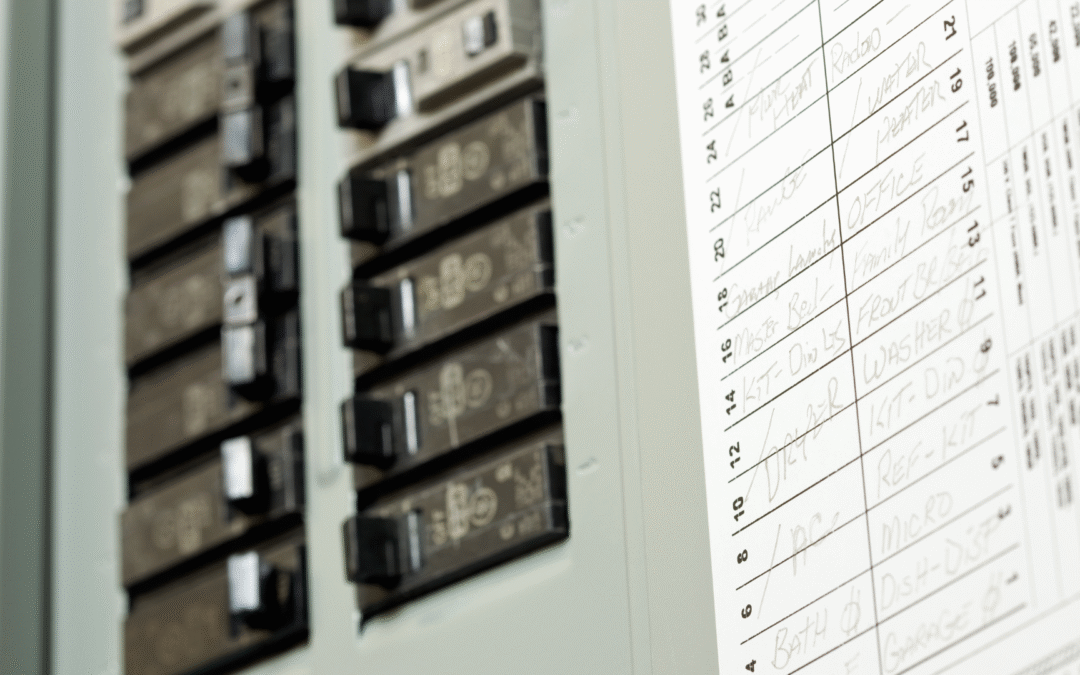It’s still hurricane season, and we’re not out of the woods yet – we’re still at risk of lightning, power surges, and electrical dangers in Florida. Now is the perfect time to inspect your breaker panel for hazards, ensure the switches are properly labeled, and test your GFCI outlets. Let’s dive in!
Examining your circuit breaker panel
Your circuit breaker panel is usually found in a utility room, garage, or on a covered porch. Each switch controls the power to a different area of your home and should be labeled as such. If it’s not, now is the time to do so. But before we start touching everything, start with a visual inspection for any signs of trouble. Open the panel door and take a look: is there rust or corrosion forming anywhere? Are any wires loose or frayed? Is there moisture inside? Do you smell burning? If the answer is yes to any of these, STOP and call a licensed electrician. There is a hazard present, and it calls for a professional.
Labeling the switches
Once the area has been cleared of risks, it’s time to label the switches. You can do this manually with a partner (where one of you flips switches and the other shouts or uses their cell to say “yes” or “no” to determine if the power feeds that part of the house), or the solo route with the aid of a circuit breaker finder tool (average cost about $50, or you can borrow one from a friend, neighbor, or tool lending library). We found this YouTube video helpful, but there are many to choose from, so pick one that works for you. Use clear handwriting or a label maker if possible and be sure not to cover any technical information inside the panel door as your electrician will need it.
Testing GFCI outlets
GFCIs (Ground Fault Circuit Interrupters) are the outlets you most often see in kitchens and bathrooms with the “reset” and “test” buttons in the middle. They’re installed in areas where water and electricity are most likely to collide, and they act as fast-acting circuit breakers, immediately shutting off power when they sense water, preventing electrocution.
Making sure your GFCIs are in good working order is important and easy to do. First, get a simple plug-in device, like a nightlight. Push the RESET button to prepare for testing and then plug the nightlight in; the light should turn on. Next, push the TEST button, and the light should turn off. Complete the test by pushing the RESET button again. The light should turn back on, and that’s how you will know your outlet is still working hard to keep you safe. If the light does not go off when the TEST button is pressed, the outlet may be faulty, and you should call a licensed electrician.
The power to stay safe
Electrical safety is something every homeowner should know about. By staying aware of your home’s electrical setup, regularly inspecting your circuit breaker panel, clearly labeling switches, and testing your GFCI outlets, you can be sure you’re taking real steps to protect your family and your home.
Don’t wait for the lights to go out to try to get familiar with your home’s electrical system. A little time spent now can prevent a big problem later!
